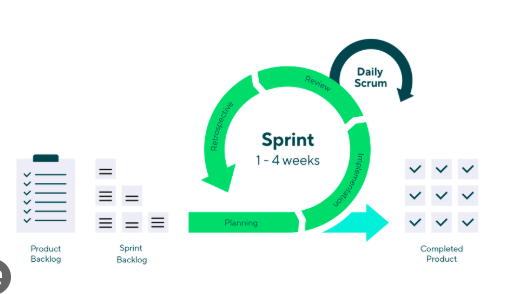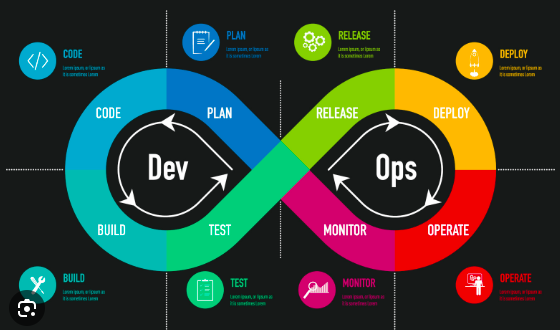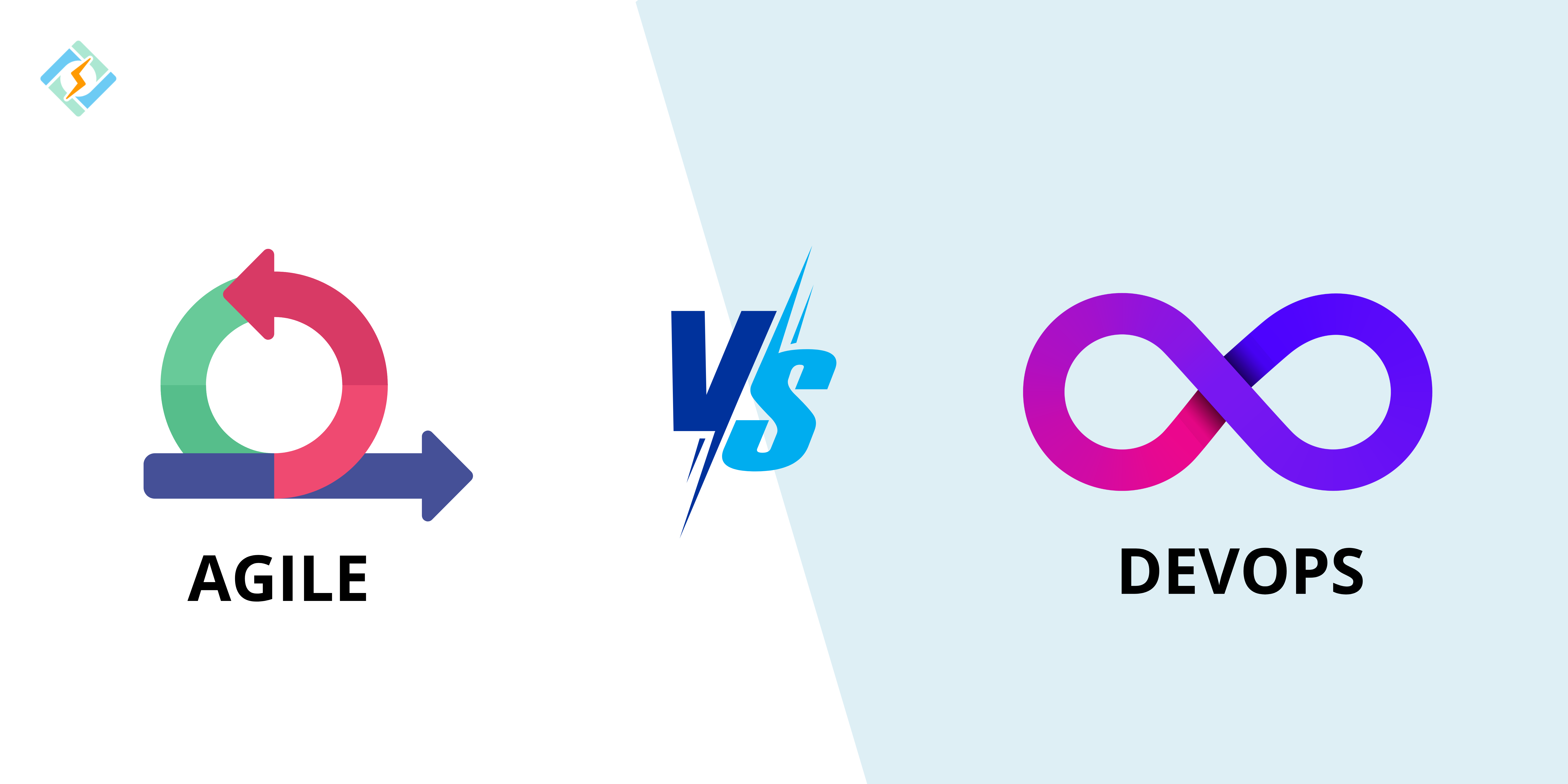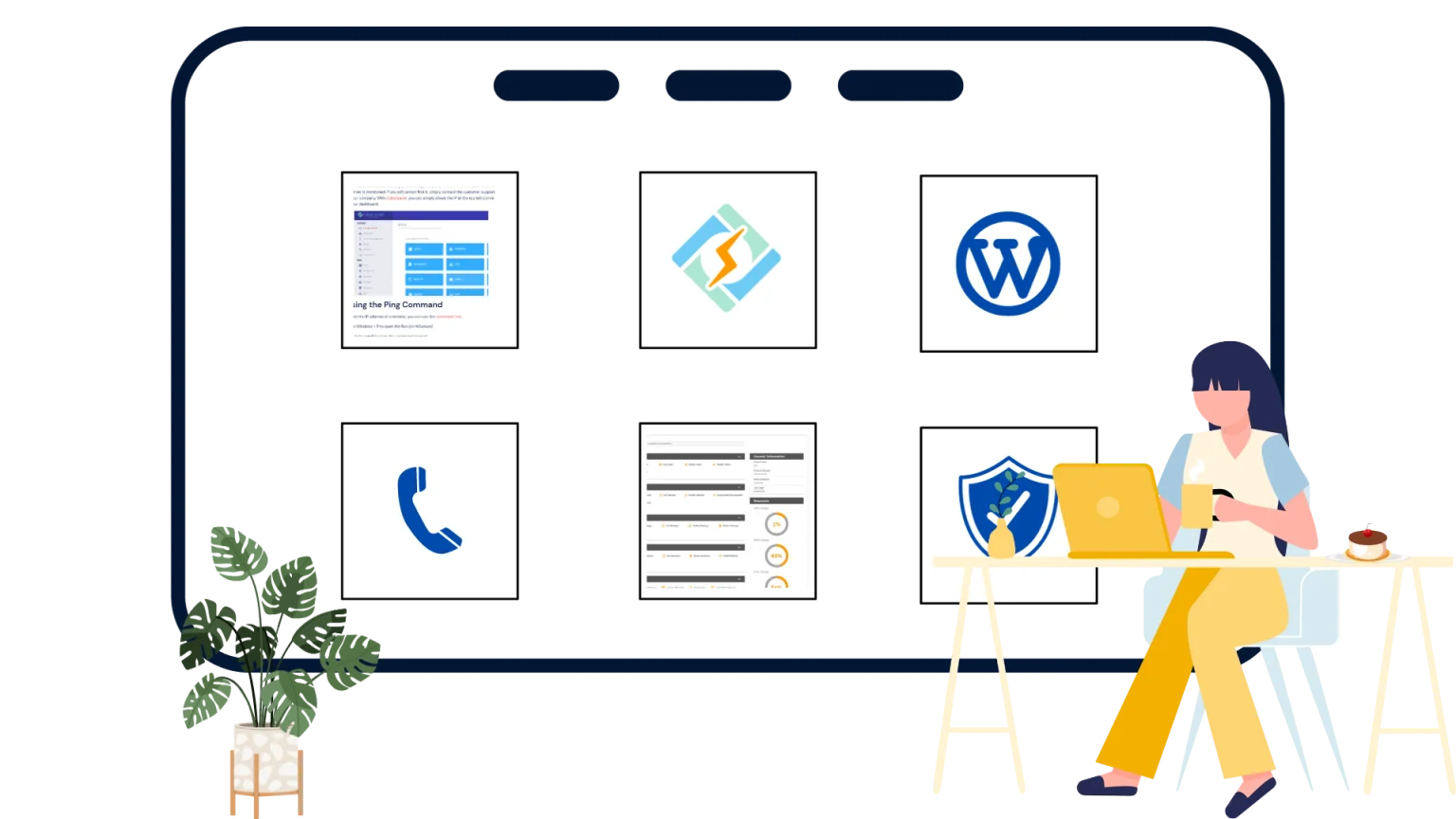Defining DevOps vs. Agile can be challenging, and their boundaries often overlap. Both agile methodology and DevOps work hand in hand to enhance efficiency and predictability throughout the software development lifecycle. Understanding the differences between Agile and DevOps is crucial for software teams aiming to optimize their workflow.
In simple terms, DevOps merges two teams—software development and IT operations—to streamline and strengthen the software development process. On the other hand, Agile focuses on various methodologies that promote iterative development, breaking tasks into smaller, more manageable pieces while fostering better collaboration.
Agile focuses on consistent development and gathering customer feedback, while DevOps enhances this by emphasizing the automation of deployment and operations. This ensures that the software meets user expectations and is delivered in a reliable and efficient manner.
This article explains how DevOps vs Agile are different, providing software teams with the insights needed to navigate their development processes effectively.
Understanding Agile

Agile is a method that uses an iterative process for software development and project management. It prioritizes teamwork and communication among diverse teams to address challenges and enable faster releases to meet deadlines. Additionally, Agile values customer feedback to enhance product quality.
In Agile development, tasks are divided into smaller segments known as ‘sprints,’ which usually last between two weeks and a month. The focus is on gradually deploying each sprint and combining them for final testing. Various tools, such as Kanban boards, Scrum, XP, and Active Collab, can be used to implement Agile practices. Defining Agile more succinctly than the original manifesto from 2001 is quite challenging.
Get exclusive access to all things tech-savvy, and be the first to receive
the latest updates directly in your inbox.
Benefits of Agile
- Quick Delivery: Frequent software updates to stakeholders enable swift adjustments.
- High-Quality Outcomes: Close cooperation between developers and testers leads to superior software quality.
- Customer Engagement: Ongoing customer participation throughout development enhances satisfaction.
- Greater Flexibility: Development is divided into small segments, known as sprints, allowing for adaptability.
- Lower Risks: Team collaboration during each development cycle helps reduce potential risks.
Drawbacks of Agile
- Inadequate Documentation: With constantly changing stakeholder requirements, thorough documentation becomes essential.
- Challenging Resource Planning: Estimating costs, resources, and timelines is tough due to uncertainty about the final product.
- Undefined Completion: The shifting demands of stakeholders create a lack of clarity regarding the final product vision.
Understanding DevOps?

DevOps connects software development with IT operations. By combining “dev” from development and “ops” from operations, we create a catchy term that reflects the blending of different concepts, similar to words like spork, phablet, brunch, jorts, and bromance.
However, DevOps is more than just a methodology; it represents a change in workplace culture. It emphasizes teamwork and collaboration among different groups. Simply focusing on automation and implementing the right software won’t suffice. Just like in agile practices, the people involved are crucial to success.
DevOps streamlines the automation of building, testing, and deploying software to the greatest extent possible. This facilitates the regular release of new software versions. Continuous integration combines code into a common repository, ensuring that developers test their code frequently. Continuous delivery employs deployment pipelines to launch applications across multiple environments simultaneously.
Benefits of DevOps
- Speed: Facilitates quicker updates and new feature releases, enabling adaptation to market shifts.
- Fast Delivery: Boosts the frequency of deployments and the speed of releases, allowing for quicker responses to customer demands.
- Reliability: Incorporates automated testing to guarantee high-quality launches and minimize downtime.
- Scalability: Utilizes automation through cloud and container technologies for cost-effective expansion.
- Teamwork: Promotes collaboration among teams, decreasing inefficiencies and conserving time.
- Security: Supports the creation of infrastructure through code, allowing for policy establishment and compliance, no matter how many deployments occur.
Drawback of DevOps
- Requires significant cultural and organizational changes.
- Potential resistance due to fear of automation replacing jobs.
- Necessitates treatments in tooling and training.
DevOps vs Agile: Key Differences
Here’s a comparison table for you to learn DevOps vs Agile differences at a glance:
| Objects | Agile | DevOps |
| Purpose | Streamlines the creation of intricate projects. Mainly for software development projects. | Connects development with operations. For both IT and development operations. |
| Task | The agile method focuses on ongoing changes to a product’s specifications. | DevOps vs agile focuses continuous testing & delivery of software. |
| Feedback | In agile, customers or stakeholders give input to the development team. | In DevOps, feedback comes from the internal team to both development and operations. |
| Team skillset | Agile vs DevOps teams consist of members with diverse and similar skills. In contrast. | DevOps separates skills into two distinct teams: operations and development. |
| Duration | Agile projects are developed in sprints, typically lasting two to three weeks. | DevOps, however, requires the development team to deploy code to production daily or every few hours. |
| Implementation | Agile can be executed using various tactical frameworks like SAFe, Scrum, & Sprint. | DevOps vs Agile, focusing on collaboration between development and operations, lacks a widely accepted framework. |
| Shift-left principle | Agile supports only the shift-left approach. | DevOps accommodates both shift-left and shift-right. |
| Focus | The agile method prioritizes the functional and non-functional readiness of software, whereas | DevOps centers on operational and business readiness. |
| Tools | Tools such as include JIRA, Trello, Asana, Kanboard, and Bugzilla facilitate project management. | For DevOps, tools are Puppet, Docker, Jenkins, Kubernetes, AWS, Chef, and Ansible. |
| Automation | Agile does not prioritize automation. | DevOps aims for automation as a key goal, focusing on maximizing efficiency in software deployment. |
| Documentation. | In agile, documentation is ongoing throughout development due to changing requirements. | Documentation is crucial as it must be provided to the operations team for deployment.. |
| Origin | It started in the year 2001. Invented by John Kern, and Martin Fowler. | It started in the year 2007. Invented by John Allspaw and Paul Hammond at Flickr, and the Phoenix Project by Gene Kim. |
Here’s a clearer explanation of the differences between DevOps and Agile:
Purpose: It streamlines the creation of intricate projects and connects development with operations.
Task: The agile method focuses on ongoing changes to a product’s specifications, while DevOps emphasizes continuous testing and delivery of software.
Feedback: In agile, customers or stakeholders give input to the development team. In DevOps, feedback comes from the internal team to both development and operations.
Team skillset: Agile teams consist of members with diverse and similar skills. But DevOps vs Agile separates skills into two distinct teams: operations and development.
Duration: Agile projects are developed in sprints, typically lasting two to three weeks. DevOps, however, requires the development team to deploy code to production daily or every few hours.

Implementation: Agile can be executed using various tactical frameworks like SAFe, Scrum, and Sprint. DevOps, focusing on collaboration between development and operations, lacks a widely accepted framework.
Shift-left principle: Agile vs DevOps supports only the shift-left approach, while DevOps vs Agile accommodates both shift-left and shift-right.
Focus: The agile method prioritizes the functional and non-functional readiness of software, whereas DevOps centers on operational and business readiness.
Tools: Common tools for agile include JIRA, Kanboard, and Bugzilla. For DevOps, popular tools are Puppet, AWS, Chef, and Ansible.
Automation: Agile does not prioritize automation, while DevOps aims for automation as a key goal, focusing on maximizing efficiency in software deployment.
Documentation: In agile, documentation is ongoing throughout development due to changing requirements. In DevOps vs Agile, documentation is crucial as it must be provided to the operations team for deployment.
Quality: The agile vs DevOps approach tends to yield higher-quality software.
Key Takeaways From DevOps VS Agile
This guide tells you everything you need to know about DevOps vs Agile. The best approach isn’t choosing one over the other but integrating both.
One of the best aspects of DevOps vs Agile practices is that they can succeed together. It’s fair to say that each is lacking without the other, and it wouldn’t be logical to completely separate them.
DevOps is rooted in Agile principles, and they complement each other perfectly. There’s no need to pick one over the other; the goal should be for your organization to embrace both.
FAQ’s
1. Is Agile compatible with DevOps?
Yes, Agile and DevOps complement each other. Agile focuses on iterative software development, while DevOps emphasizes seamless deployment and operations. Together, they create an efficient and scalable pipeline from development to deployment.
2. Is DevOps replacing Agile?
A very big question but No, DevOps is not a replacement for Agile. Instead, it builds upon Agile principles by integrating automation, continuous integration/continuous deployment (CI/CD), and fostering collaboration between development and operations teams.
3. What are the key differences between Agile vs DevOps?
Agile vs DevOps is centered around software development methodologies like Scrum or Kanban, while DevOps vs Agile focuses on automation, CI/CD, and enhancing operational efficiency. Agile is concerned with the creation of software, whereas DevOps aims to streamline and expedite the deployment process.
4. Which approach is better for startups: Agile or DevOps?
Startups benefit from Agile during the early stages of development due to its flexibility and emphasis on customer feedback. As the product matures, DevOps becomes essential for automating deployment and ensuring operational stability.
5. Should I implement DevOps if I’m already using Agile?
Yes. While Agile optimizes development processes, DevOps enhances deployment and maintenance efficiency. Together, they create a high-performance software delivery pipeline that is well-organized.
6. What are some popular tools used in Agile and DevOps?
Agile tools include: Jira, Trello, Asana, and Monday.com.
DevOps vs Agile tools include: Jenkins, Docker, Kubernetes, Ansible, and Terraform.
7. How does CI/CD relate to Agile and DevOps?
CI/CD (Continuous Integration and Continuous Deployment) is primarily associated with DevOps, but it also supports Agile teams by enabling rapid, automated releases in small, incremental steps.
8. Which sectors benefit the most from Agile and DevOps?
Agile and DevOps are prevalent in industries such as technology, finance, healthcare, and e-commerce, where rapid software updates, automation, and reliability are crucial.
9. Can Agile be used independently of DevOps?
Yes, Agile can be implemented without DevOps, but it may not achieve the same level of efficiency in deployment and maintenance.



